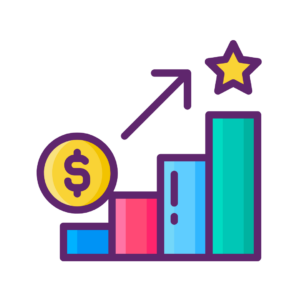In the sphere of marketing Customer Lifetime Value (CLV) allows the business to track key metrics regarding the worth of a customer to the business. Customer Lifetime Value measures the total worth of a customer to the business throughout their entire relationship. This allows a business to measure the value of a customer over their entire relationship rather than on a purchase to purchase basis. It is essential for business owners to understand CLV, and how it benefits their businesses. CLV allows businesses to make informed decisions regarding marketing strategies, customer retention and overall business performance strategies.

First, let’s address the key components of Customer Lifetime Value. CLV allows businesses to understand the long-term value of their customers while providing a critical indicator for how to make informed decisions in overall business strategy. The key components of CLV include:
Customer Acquisition Cost (CAC): This is the cost a business pays in order to acquire a new customer. These factors include spending on marketing expenses, sales costs and any other expenses related to the onboarding process of new customers.
Revenue Per Customer: This is the average amount of money spent in each transaction or over a specific period of time by individual customers. Revenue per customer includes the initial purchase as well as any purchases or upsells later in the relationship.
Customer Retention Rate: The percentage of customers who continuously do business with a company within a given period of time. Typically higher retention rates lead to higher levels of CLV.
Profit Margin Per Customer: The profit made by a business from each customer after accounting for the costs associated with providing a service or product.
Customer Lifetime: The expected duration of the relationship between the business and its customers. This can be measured in months or years, and should be dependent on the business model.
So, what are the 7 key reasons why businesses should care about Customer Lifetime Value?
Better Customer Segmentation:
CLV provides businesses with the ability to rank customers from most to least valuable, with a focus on long term value.
Businesses can tailor marketing strategies to meet the needs of their high-value customers.
Enhanced Customer Retention:
CLV allows businesses to identify which customers they should focus retention efforts by developing targeted retention strategies.
Retaining existing customers is more cost-effective than acquiring new ones.
Long-Term Profitability:
CLV provides businesses with a long-term view on profitability by allows strategies to develop that enhance long-term value over short term gains.
Shift towards long-term value creation allows for sustainable business growth and long term profitability.
Optimization of Sales and Marketing Efforts:
CLV provides insight to which channels and strategies attract high value customers allowing businesses to optimize marketing efforts.
Allows businesses to better align their resources with customer behaviors.
Informed Market Spending:
CLV allows businesses to allocate their marketing budgets in the most efficiency way rather than spending equally across all channels.
This allows for stronger return on investments in marketing.
Competitive Advantage:
Leveraging CLV effectively allows businesses to gain a competitive edge by focusing efforts on retaining and maximizing the value of the most profitable customers.
Increased competitive advantage leads to improved market share and a strong competitive position.
Acquisition Cost (CAC):
CLV allows businesses to evaluate the cost-effectiveness of their customer acquisition efforts
Businesses can determine if their investments in new customer acquisition is justified by comparing CLV to customer acquisition cost.
How to Calculate CLV?
Now you may be wondering how to calculate CLV. Here is the simplest CLV Formula:
Simple CLV Formula
For the quickest approach CLV can be calculated as
CLV = Average Purchase Value X Purchase Frequency X Customer Lifespan
Average Purchase Value : The total revenue divided by the number of purchases.
Purchase Frequency : Average number of purchases the customer makes over a set time period.
Customer Lifespan : Average duration a customer continuously purchases from the company.
Market Optimization: When targeting high customer lifetime value clients businesses can optimize marketing campaigns to develop higher return on investments.
Product Development: The insights from CLV can provide guidance in the development of products and services that meet the needs of high value customers
Customer Support: Support can be prioritized for customers with higher CLV to ensure that loyal customers are respected and valued
Loyalty programs: Developing loyalty programs that target high CLV customers can lead to increased engagement and further increases to lifetime value
Customer Lifetime Value is a crucial measure for business success that projects long-term value and customer relationship potential that goes beyond short-term profits. When businesses begin to leverage CLV, companies can make informed decisions regarding the sustainability of growth, improve customer satisfaction and redirect marketing efforts to the most effective strategies.
CLV=(AveragePurchaseValue)×(PurchaseFrequency)×(CustomerLifespan)CLV = (Average Purchase Value) \times (Purchase Frequency) \times (Customer Lifespan)
CLV=(AveragePurchaseValue)×(PurchaseFrequency)×(CustomerLifespan)
Where:
Customer Lifetime Value is higher for loyal and repeat customers who make frequent purchases over time. It is also greater for high-value customers who buy premium or high-margin products. Subscription-based customers contribute more due to predictable recurring revenue.
Referred customers tend to have higher CLV as they trust the brand more and stay longer. Customers engaged in loyalty programs and those in industries with high switching costs, such as banking or telecom, also have higher CLV. Additionally, niche or passionate customer segments, like luxury buyers or collectors, often display long-term commitment, increasing their overall lifetime value.
Empowering businesses to optimize their conversion funnels with AI-driven insights and automation. Turn traffic into sales with our advanced attribution platform.



